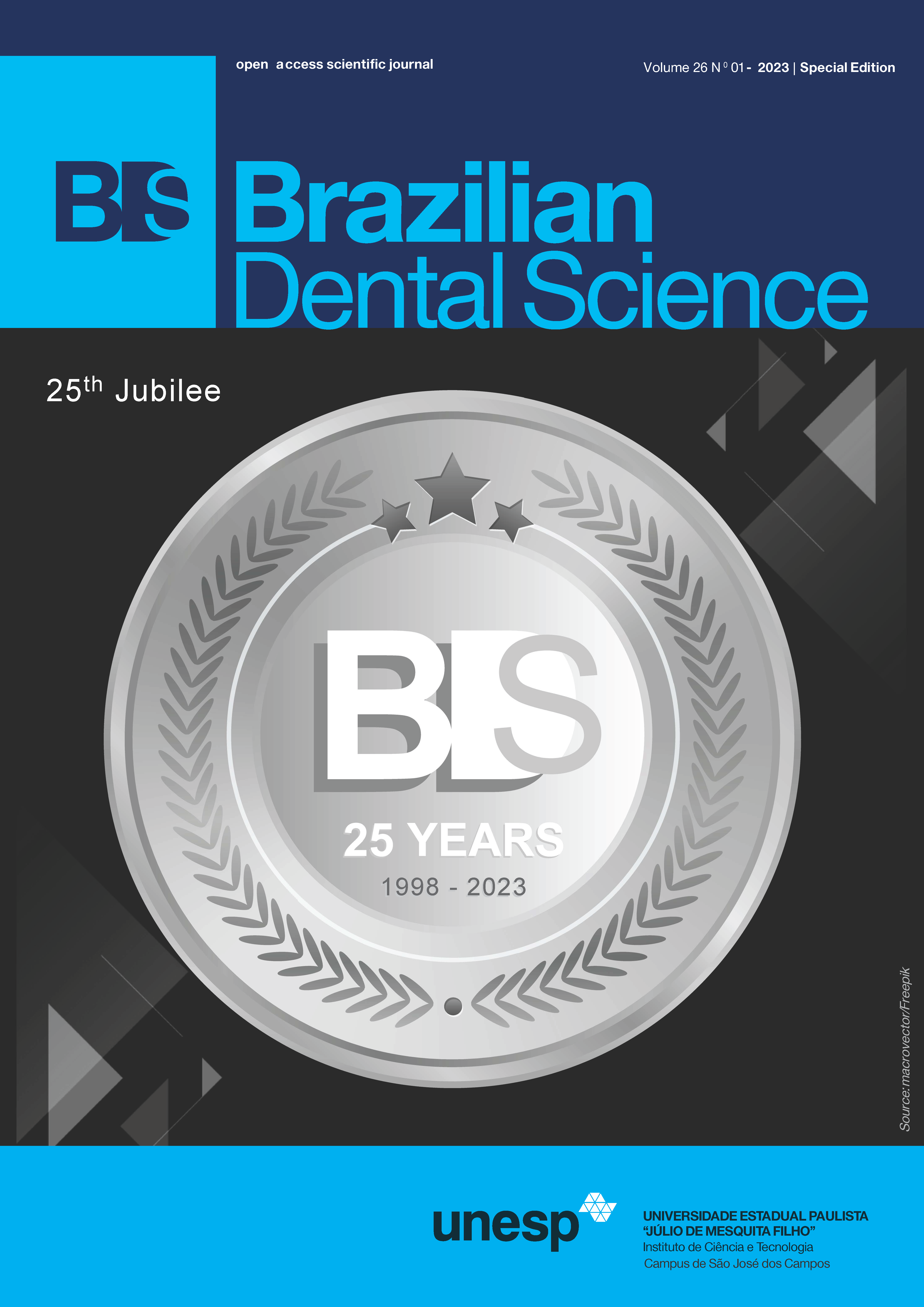Biomimetics and the restoration of the endodontically treated tooth
DOI:
https://doi.org/10.4322/bds.2023.e3668Abstract
Although much progress has been obtained in terms of the Endodontic treatment, the literature shows that true success can be only achieved with adequate coronal seal to avoid bacterial contamination, and protect the tooth structure from fracture. There are many options available to the clinician to restore the endodontically treated tooth; however, there is not much evidence available on what alternative is better than another. This review will critically present the current knowledge on restorative choices, including posts and endocrowns, showing advantages and disadvantages of different treatment forms. With this knowledge, we will also introduce the concept of biomimetics to endodontically treated teeth, and how the nature of their remaining tooth structure can benefit from this approach. This concept entails the use of mechanisms and biologically produced materials to restore a tooth in a way that would mimic its natural structure, with the purpose of achieving better longterm prognosis.
KEYWORDS
Endodontics; Dental restoration; Biomimetics; Adhesion; Tooth fracture.
Downloads
Published
How to Cite
Issue
Section
License
Brazilian Dental Science uses the Creative Commons (CC-BY 4.0) license, thus preserving the integrity of articles in an open access environment. The journal allows the author to retain publishing rights without restrictions.
=================




























